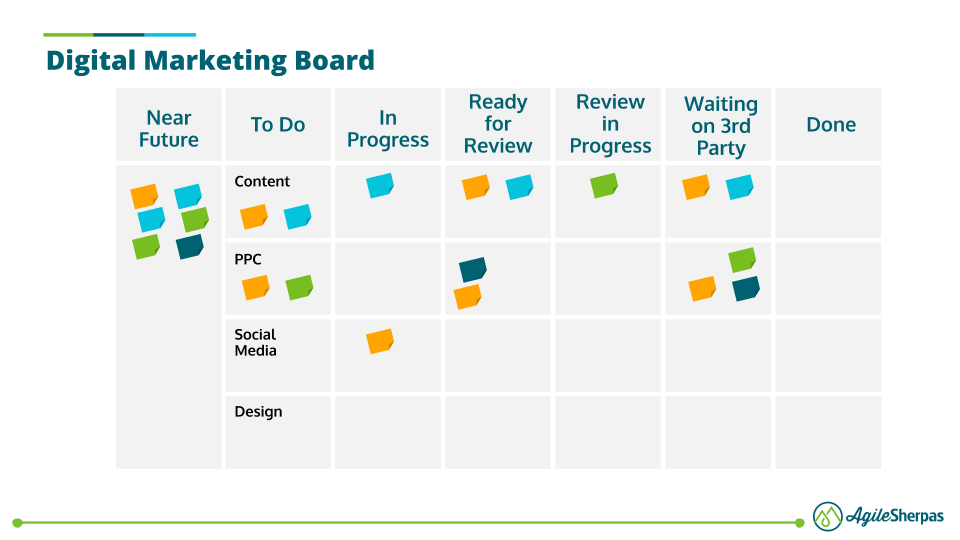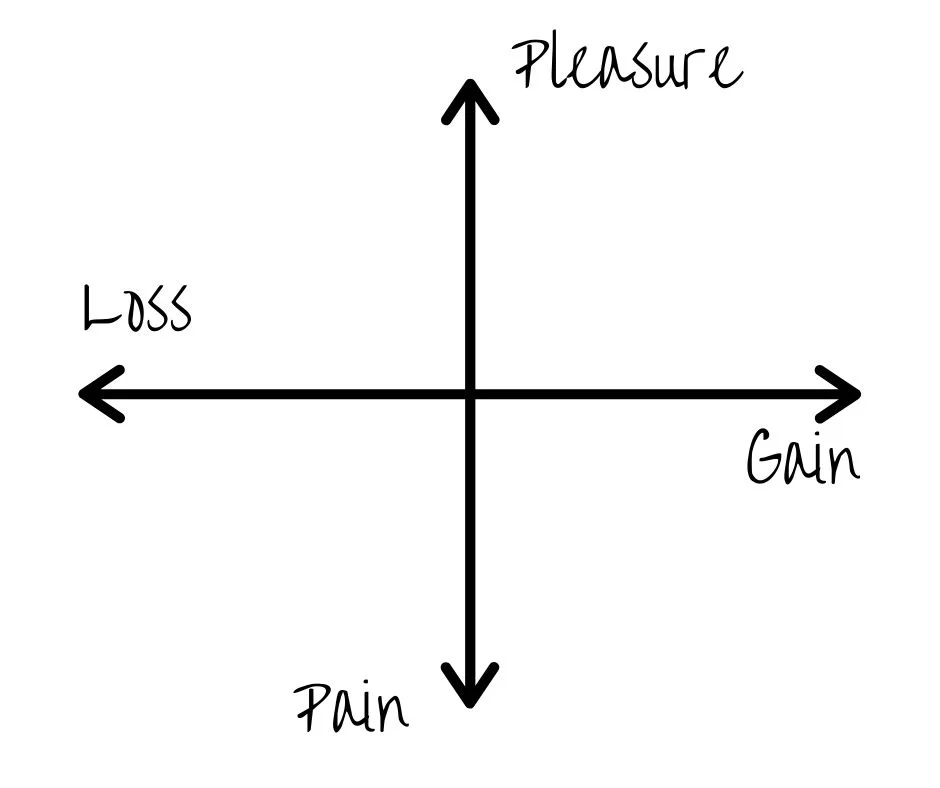-
- marketing agility
- Teams
- Organizations
- Education
- enterprise
- Articles
- Individuals
- Transformation
- Solution
- Leadership
- Getting Started
- business agility
- agile management
- going agile
- Frameworks
- agile mindset
- Agile Marketing Tools
- agile marketing journey
- Agile Marketers
- organizational alignment
- People
- Selection
- (Featured Posts)
- agile journey
- Metrics and Data
- Kanban
- strategy
- Resources
- Why Agile Marketing
- agile project management
- self-managing team
- Meetings
- agile adoption
- scaled agile marketing
- tactics
- Scrum
- scaled agile
- agile marketing training
- agile takeaways
- Agile Meetings
- agile coach
- Agile Leadership
- Scrumban
- enterprise marketing agility
- state of agile marketing
- team empowerment
- agile marketing mindset
- agile marketing planning
- agile plan
- AI
- Individual
- Intermediate
- Team
- Videos
- kanban board
- Agile Marketing Terms
- agile marketing
- agile transformation
- traditional marketing
- FAQ
- agile teams
- Agile Marketing Glossary
- CoE
- agile
- agile marketer
- agile marketing case study
- agile marketing coaching
- agile marketing leaders
- agile marketing methodologies
- agile marketing metrics
- agile pilot
- agile sales
- agile team
- agile work breakdown
- cycle time
- employee satisfaction
- marketing value stream
- marketing-analytics
- remote teams
- sprints
- throughput
- work breakdown structure
- News
- Scrumban
- agile brand
- agile marketing books
- agile marketing pilot
- agile marketing transformation
- agile review process
- agile team charter
- cost of delay
- hybrid framework
- pdca
- remote working
- scrum master
- stable agile teams
- startups
- team charter
- team morale
- user story
- value stream mapping
- visual workflow

Real business agility isn't a one-time implementation, it's a culmination of an ongoing, never-ending series of micro-improvements. To say that you're truly Agile, you need to commit to continuous improvement.
Cultivating the ability to continuously improve is vital to ensuring teams experience quick wins with Agile, as well as long-term process success. It can also make the difference between reaching the summit of marketing agility or straying from the path and reverting back to old habits.
Making a few haphazard improvements at the outset of your Agile adoption will likely result in better marketing performance here and there, but keeping the momentum going can be difficult.
For that, you’ll need a company culture that instigates, supports, and encourages continuous improvement on a number of different levels at once.
Understanding that this can be a challenge for any organization, we've prepared a comprehensive guide to put any team on the path of continuous improvement and keep them there over the long run. Here are eight proven ways for building a culture that facilitates continuous marketing improvement in a context of Agile ways of working.
Map Your Value Stream
Value stream mapping is an invaluable technique for achieving continuous improvement by reducing process wastes. It allows you to gain a comprehensive understanding of your marketing process and gives you the ability to constantly identify room for improvement.
The value stream map is a visual representation of all the steps that are needed in order for your team to create value for your customers from start to finish.
But value streams aren't one size fits all.
Depending on the organizational level at which you apply it, the value stream map can look very different.
On the strategic level, traditionally, the value stream would be in the form of a diagram that visualizes all marketing process steps.
On the team level, it should visualize all the process stages that an assignment goes through before it can be delivered to the customer (or passed to the next team in the value stream).
Therefore, you can apply value stream mapping by building a Kanban board and mapping the stages of your team’s process as columns on the board itself. With a Kanban board in place, the team can monitor how work flows through the value stream map, including where it gets stuck.
This bird's eye view of the team process and its steps can help teams plan improvement initiatives and continuously improve their performance. The board's accessibility also makes it easy for any team member to spot problems and suggest improvements on a rolling basis.
For this to work, it's important that your team understands the value of visualization and stays diligent about adding all in progress and backlog tasks to the board.
If the team isn't consistent about visualizing all of their work items on the board, the information you collect from it will become increasingly inaccurate. It will also become virtually impossible to effectively evolve the value stream map.
Remove Barriers to Improvement
Creating a culture of continuous improvement takes time and collective effort. To facilitate the necessary environment for it to blossom, everybody in the organization needs to be engaged and motivated to keep an eye out for improvement opportunities.
From then on, removing as many barriers barriers to improvement is essential. These barriers can vary and manifest in different ways across the organization. The ones we've observed most frequently are lack of team empowerment and an ill-suited toolstack.
Tools can always be sourced. Listen to your teams about what they need to optimize their workflows and which tools will help them deal with managing the demand on their time.
Empowerment is trickier, because it's the responsibility of leaders as well as execution teams in equal measure.
Leaders can have a hard time making their teams feel empowered for a number of reasons. Behaviors like micromanagement, giving feedback that is not constructive, and regularly disrupting the team's plans all make it difficult for team members to feel a sense of process ownership. Further, these behaviors seriously hinder employee morale across the team and significantly reduce the chances of achieving continuous improvement.
To avoid behaviors that don't empower their teams, leaders begin to serve as guides, merely helping the team when needed. The team then has a chance to gain a sense of ownership of their own work and, in time, start to look for ways to improve it themselves.
Adopt Cross-functional Teams
Cross-functional team structures are growing in popularity among startups and enterprises alike, and there's a good reason for that: they allow teams to process work faster and with greater agility. As a result, cross-functional teams are fantastic pathways to continuous improvement.
Traditional marketing organizations form execution teams around specific functions such as email marketing, comms, creative, etc. This approach creates silos between different functional groups in the organization and enforces specialization, and it doesn't give anyone a wider breadth of understanding of other people's disciplines.
On the other hand, cross-functional teams bring together a variety of specialists with diverse skillsets. They're not limited to working on "what they know best" but are enabled to contribute wherever they're most needed.
Individual experts are also encouraged to expand their skills in other areas, not just focus on those for which they were hired. To make this a reality, you need to give your employees the chance to expand their skill sets and evolve into T-shaped professionals.
When team members are allowed to work on different parts of the team’s projects, you can expect several benefits, including reduced handovers and improved communication between team members.
The ultimate goal of implementing this alternative team structure is for persistent groups to be able to complete certain types of projects from start to finish on their own, without dependencies.
Transforming siloed functional teams into cross-functional teams incentivizes individuals to up-skill, and teams to own their process from start to finish. It represents a big, confident step on the path to continuous improvement.
Measure What Matters
Metrics are any marketer’s best friend. They can guide you during uncertain times and show you where you need to improve in objective numbers. However, with so much data available, it's vital to choose the right key performance indicators to measure and monitor closely in order to achieve continuous improvement.
Besides the traditional metrics that you use to measure the impact of each marketing channel and the performance of particular campaigns, it's also beneficial to track a set of process metrics. Their role is to show you how productive you really are and how efficiently you're processing your marketing work.
Depending on your approach to Agile, you have several options available to you. The most popular among them are lead time, cycle time, and throughput.
Lead time covers the time frame between committing to process a work item and the moment of delivery to the customer. It's a metric used for gaining perspective on how long it takes your team to find the capacity to start a task from the moment you agree to process it.
On the other hand, cycle time covers the time between the start of execution and the delivery of finished work. This makes it invaluable for measuring efficiency from the moment you start a task to the moment you actually deliver its value.
Throughput accounts for the amount of work you are finishing within a specific time frame. It helps you quantify your productivity by showing how frequently you are able to deliver value (not necessarily how long it takes you to do it).
These process metrics can serve as a solid foundation for achieving continuous improvement when you measure and monitor their values on the team and task level in the long run. Your goal should be to continuously reduce cycle time and lead time while increasing the throughput of the team. These metrics can also help you identify issues like unplanned work that can easily bog teams down.
Plan Frequent Experiments
Experimentation is the key to innovation and a foundational practice for achieving continuous improvement. Successful Agile teams plan frequent experiments and test ideas for optimizing the process through which they are carried out.

A favorite framework for structuring experimentation, beloved by Agile teams and often taught in Agile marketing training, is PDCA. The abbreviation stands for plan-do-check-act. These four steps form a proven cycle for running experiments and using learnings from each test towards achieve continuous improvement.
In the planning stage of PDCA, teams identify a problem or opportunity, analyze it and develop a hypothesis around it. Each experiment is linked to a single hypothesis about its outcome. A high-quality hypothesis contains a well-defined desired outcome, several measurable key performance indicators, and a specific method for testing.
The “Do” phase of PDCA is when teams test the defined hypothesis a clear timeframe, which can range from days to months, depending on the test. After "Check"-ing whether the actual outcome reflects the hypothesis, teams can decide how to "Act", based on the results. Options for actions include applying the solution on a larger scale or restarting the cycle with a new hypothesis in search of improvement.
To facilitate a culture of continuous improvement, involve your team in the process of planning experiments. Even better, encourage each person to share their ideas for future experiments and record them in a dedicated backlog for the purpose.
Create a Safe Environment
No matter how you approach continuous improvement in your organization, employee engagement is crucial for creating a culture that supports your efforts in this direction.
Teams that feel heard within their organizations share a passion for continuously outperforming themselves and strive for improvement without pressure from management.
This dynamic is only possible within an environment where everybody feels safe and comfortable to propose improvements without fearing failure.
If individuals fear that the experiments they propose have a chance to negatively affect their careers in the company, they'll hesitate to bring suggestions for improvement to the table.
To change that, leaders must communicate that failure is acceptable as long as you don’t repeat the same mistakes more than once, a foundational principle of the Agile marketing manifesto.
Giving and receiving feedback early and often is also a tenet of agility. To avoid encouraging a blame culture inside the organization, leaders and team members are encouraged to deliver constructive feedback and look for next steps collectively. Keeping the spirit of improvement alive means always looking for better solutions without shutting down suggestions in the process.
Do Frequent Retros
Retrospectives, otherwise known as retros, are meetings coveted by highly-engaged Agile marketing teams. Retros are the time we carve out to talk about continuous improvement head-on and tackle the tough issues -- What worked? What didn't? What can we do better?
Depending on the Agile framework you've implemented, you may hold a retrospective either after each sprint or on an as needed basis during a project. Based on Norm Kerth's handbook for successful project retrospectives, the prime directive of any retrospective of the process takes into account that:
"Regardless of what we discover, we understand and truly believe that everyone did the best job they could, given what they knew at the time, their skills and abilities, the resources available, and the situation at hand."
At the end of the retro, the team should reach agreement on parts of the process that bear to be improved while also celebrating process successes from the previous period of work.
There are several fun formats you can use in order to keep the team engaged and make the most of the dedicated time you spend in retrospectives. For example, you can discuss how things went based on four categories and map them on a spectrum:
- Pleasure
- Pain
- Gain
- Loss

When initiating the retro, you should create a graph like the one above and add the past activities in a quadrant that describes them most accurately. Afterward, you can discuss the “why” behind the current situation and brainstorm ways to reduce the items that were a pain or a loss to the team.
Acknowledge Success
Last but not least, creating a culture of continuous improvement means teams can look forward to celebrating success as a group and acknowledging individual contributions. Most people enjoy being recognized for their efforts in front of their peers. Receiving and extending praise where it is due can significantly boost motivation for even greater success in the future.
As a result, the desire to contribute to the team’s continuous improvement will exponentially increase.
You can even get creative and find unique ways of celebrating team success while giving individual credit. For example, scheduling a regular celebration gathering during which contributors who have been particularly vital in a recent accomplishment receive "fake" awards or gag gifts. You can even consider implementing a bonus system for extra days of paid holiday or financial rewards.
Feeling Inspired Already?
Creating a culture of continuous improvement is a process that requires consistent effort and patience. However, the return you'll get in the long run is well worth the investment. In addition to making your process better and bringing more value to your company, you'll be able to build stronger teams that trust and rely on each other.
These eight ways for creating a culture of continuous improvement can do miracles for your company culture and performance when applied in conjunction.
Still, it's important to implement them at your own pace.
Explore each of these tactics individually in their dedicated blog articles, linked throughout the piece or practice them all during one of our upcoming online trainings! Agile marketing coaching may also help you understand how to implement them in your unique circumstances.
Before you move on, why don't you take a second to get our Agile Marketing Transformation Checklist?
Topics discussed
Improve your Marketing Ops every week
Subscribe to our blog to get insights sent directly to your inbox.


